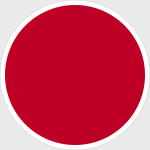Hobby Master HA8806 Imperial Japanese Navy Mitsubishi A6M2 "Zero" Fighter - 3-112, Lt. Minoru Suzuki, 12th Kokutai, China, 1941 (1:48 Scale)
"We have resolved to endure the unendurable and suffer what is insufferable."
- Japanese Emperor Hirohito speaking to the Japanese people after the atomic bombings, August 1945
 The Mitsubishi A6M "Zero" is a long-range carrier-based fighter aircraft formerly manufactured by Mitsubishi Aircraft Company, a part of Mitsubishi Heavy Industries. It was operated by the Imperial Japanese Navy (IJN) from 1940 to 1945. The A6M was designated as the Mitsubishi Navy Type 0 carrier fighter, or the Mitsubishi A6M Rei-sen. The A6M was usually referred to by its pilots as the Reisen (zero fighter), "0" being the last digit of the imperial year 2600 (1940) when it entered service with the Imperial Navy. The official Allied reporting name was "Zeke", although the name "Zero" was used colloquially as well.
The Mitsubishi A6M "Zero" is a long-range carrier-based fighter aircraft formerly manufactured by Mitsubishi Aircraft Company, a part of Mitsubishi Heavy Industries. It was operated by the Imperial Japanese Navy (IJN) from 1940 to 1945. The A6M was designated as the Mitsubishi Navy Type 0 carrier fighter, or the Mitsubishi A6M Rei-sen. The A6M was usually referred to by its pilots as the Reisen (zero fighter), "0" being the last digit of the imperial year 2600 (1940) when it entered service with the Imperial Navy. The official Allied reporting name was "Zeke", although the name "Zero" was used colloquially as well.
The Zero is considered to have been the most capable carrier-based fighter in the world when it was introduced early in World War II, combining excellent maneuverability and very long range. The Imperial Japanese Navy Air Service also frequently used it as a land-based fighter.
In early combat operations, the Zero gained a reputation as a dogfighter, achieving an outstanding kill ratio of 12 to 1, but by mid-1942 a combination of new tactics and the introduction of better equipment enabled Allied pilots to engage the Zero on generally equal terms. By 1943, the Zero was less effective against newer Allied fighters. The Zero lacked hydraulic boosting for its ailerons and rudder, rendering it difficult to maneuver at high speeds. Lack of self-sealing fuel tanks also made it more vulnerable than its contemporaries. By 1944, with Allied fighters approaching the A6M's levels of maneuverability and consistently exceeding its firepower, armor, and speed, the A6M had largely become outdated as a fighter aircraft. However, as design delays and production difficulties hampered the introduction of newer Japanese aircraft models, the Zero continued to serve in a front-line role until the end of the war in the Pacific. During the final phases, it was also adapted for use in kamikaze operations. Japan produced more Zeros than any other model of combat aircraft during the war.
Pictured here is a 1:48 scale replica of an Imperial Japanese Navy Mitsubishi A6M2 "Zero" fighter that was piloted by Lt. Minoru Suzuki, who was attached to the 12th Kokutai, then deployed to China during 1941.
Sold Out!
Dimensions:
Wingspan: 9-inches
Length: 7-1/4-inches
Release Date: July 2019
Historical Account: "Downward Spiral" - By 1941, the Japanese Army Air Force had about 1,500 combat aircraft. During the first years of the war, Japan continued technical development and deployment of increasingly advanced aircraft and enjoyed air superiority over most battlefields due to the combat experience of its crews and the handling qualities of its aircraft.
However, as the war continued, Japan found that its production could not match that of the Allies. On top of these production problems, Japan faced continuous combat and thus continued losses. Furthermore, there were continual production disruptions brought on by moving factories from location to location, each transfer with the goal of avoiding the Allied strategic bombing. Between these factors and others, such as the restricted strategic materials, the Japanese found themselves materialistically outmatched.
In terms of manpower, Japan was even worse off. Experienced crews were killed and replacements had not been planned. The Japanese had lost skilled trainers, and they did not have the fuel or the time to use the trainers they did have. Because of this, towards the end of its existence the JAAF resorted to kamikaze attacks against overwhelmingly superior Allied forces.


